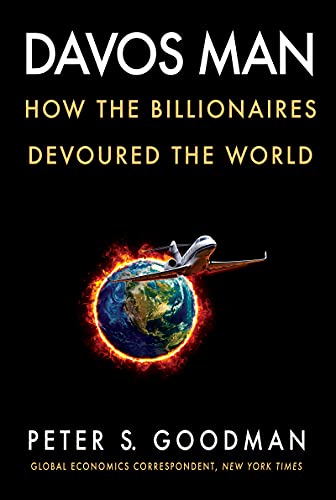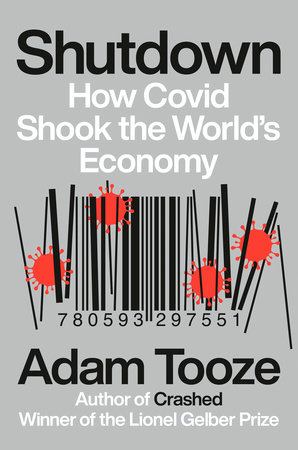This never ends well for Mexico, and especially not for U.S. taxpayers, who always get stuck with the bill when the U.S. government rushes in to bail out our southern neighbor every time its economy crashes.
At the Wall Sweet Journal, "Mexico Takes Aim at Private Companies, Threatening Decades of Economic Growth":
Populist president seeks to reclaim state control over oil-and-gas, electricity sectors; ‘It’s a closing off of Mexico’. MONTERREY, Mexico—For the past 20 years, a 1,100-megawatt power plant owned by Spain’s Iberdrola SA outside Mexico’s industrial capital has kept the lights on for scores of companies such as brewing giant Heineken NV, despite winter freezes, a hurricane and the occasional brush fire. But since January, half the gas-fired plant has been forcibly shut down by Mexico’s government, which argues that private energy companies have plundered Mexico like Spanish conquistadors of old. The electricity shutdown forced dozens of firms in Monterrey to return to the inefficient and more costly state-run utility for their power. In September, a fuel-import terminal owned by global investment firm KKR & Co. was closed at gunpoint by Mexico’s energy regulator, months after it closed two other such terminals owned by U.S. companies. Last year, the government took over operating control of the biggest oil find in recent Mexican history, stripping it from a U.S. company that made the discovery. It is also trying to revoke the operating license of Latin America’s largest wind farm, majority owned by Japan’s Mitsubishi Corp., an example of how the government’s policies are hobbling Mexico’s transition to renewable energy. Going after private companies might seem like something from the playbook of Socialist Venezuela rather than Mexico, which in recent decades has transformed itself into one of the world’s most globalized nations, signing free-trade deals with more than 40 countries and using manufacturing exports to become the U.S.’s second largest trading partner. Along the way, it lifted millions of its citizens out of poverty. But Mexico’s populist leader Andrés Manuel López Obrador, who took office in 2018, is shifting the country to a 1970s industrial policy focused on the domestic market, natural resources such as oil and greater state intervention, from backing state-run energy giants to using the army for major public-works projects. “It’s a closing off of Mexico,” says Gabriela Siller, an economist at Mexico’s Tecnológico de Monterrey. The change is especially stark in Mexico’s crucial energy sector, where the government has launched a broad effort to stop new private investment and restore the dominant position of former government monopolies in both oil and gas and electricity—effectively reversing a 2013 constitutional overhaul that opened both markets to private firms. The moves will cost Mexico billions of dollars in forgone investment; raise domestic energy prices; limit the growth of oil and electricity output; and damage the competitiveness of Mexican companies and hundreds of multinationals that operate here, according to the U.S. government, private companies and economists. It also risks prompting more migration by job-seeking Mexicans to the U.S. The president says, without offering evidence, that past governments were paid off by multinationals to allow them to enter the market and destroy the state oil giant Petróleos Mexicanos, or Pemex, and the state-run utility, Federal Electricity Commission, or CFE, leaving Mexico’s energy security at risk and consumers at the mercy of profiteers. He also argues that Mexico’s turn to an open economy left too many poor people behind. “They had a plan to close all the CFE plants and leave everything to the private sector, to such a degree that half our country’s electricity is now made by private companies,” the president said at a news conference. The CFE has a monopoly on residential power, which it subsidizes heavily. But it lost hundreds of industrial clients over the past decade as firms opted for cheaper electricity provided by private firms. The CFE usually doesn’t subsidize electricity for large corporate clients, and its prices can be up to 30% to 50% higher than those of private power producers. Some privately produced renewable energy is a third of the price of the CFE’s power, according to Mexico’s renewable energy association. In many ways, the decommissioned electricity plant outside Monterrey is a metaphor for Mexico’s stalled economy and a glimpse of the country’s potential economic future. From 2019 through 2021, the first full three years of Mr. López Obrador’s presidency, Mexico’s economy shrank an average of 1.14% a year, according to government data. While the U.S. regained its prepandemic level of economic output by mid-2020, Mexico is among the few countries in the hemisphere, along with the leftist dictatorship of Venezuela, that hasn’t yet recovered, according to estimates from the International Monetary Fund. The Mexican economy is now lagging that of the U.S. and Canada in a sustained way for the first time since shortly after the mid-1990s, when all three countries banded together in a free-trade deal then called the North American Free Trade Agreement, or NAFTA. Next year, Indonesia is set to overtake Mexico as the world’s 15th-biggest economy, according to IMF estimates. At the same time, migration from Mexico has accelerated to the U.S. for the first time since the early 2000s. In fiscal year 2021, U.S. apprehensions of Mexican migrants along the U.S.-Mexico border more than doubled over the previous year to almost 655,600. That figure is set to rise in 2022, U.S. government data show. Mexico’s average electricity prices for companies are already about 40% higher than the U.S., according to Mexican business chamber Concamin, putting the country at a disadvantage for manufacturing. But economists say Mr. López Obrador’s policies will make matters far worse. Since Mr. López Obrador took power, the government has halted new auctions for oil-and-gas exploration by private firms, new mining concessions and new investments for private electricity generation, including solar and wind farms that can produce electricity at roughly a third the CFE’s average cost, according to figures from Mexico’s energy regulator. Last year, the government passed a law forcing the national electric grid to give priority to electricity produced by the CFE, even though its power is more costly and polluting than that of private firms. The laws retroactively affected an estimated $22 billion in investment by firms such as Iberdrola. Energy regulators have also tied up oil-and-gas firms from Shell to BP to prevent them from opening up new filling stations to compete with state oil giant Pemex, the companies said. The law forcing the grid to use the CFE’s electricity first could raise Mexico’s electricity costs by up to 52%, or some $5.5 billion a year, and boost CO2 emissions by up to 73 million tons a year, a 65% jump from current emissions, according to a recent study by the U.S. government’s National Renewable Energy Laboratory. That would prevent Mexico from meeting its carbon reduction goals under the Paris Climate Agreements, say environmental groups like the Natural Resources Defense Council. Mexico’s Environment Ministry declined to comment. Felipe Calderón, Mexico’s president from 2006 to 2012, tweeted last October, “What Mexicans need is more clean energy…and not more polluting and expensive energy from the CFE. The government’s changes seek to stop renewable energy from private firms and force us all to pay for old fossil-fuel energy.” Thanks to more than 200 lawsuits against the new dispatch rules, a judge last year ordered the government to temporarily block their implementation. The government is appealing the order and has vowed to start implementing the changes despite it. Mexico has halted auctions for new renewable-energy investments. Three such auctions between 2015 and 2017 were so successful they doubled the country’s renewable energy capacity to 15 gigawatts, according to the wind industry association. During the 2017 auction, Mexico set a then-world record low price for wind power per megawatt hour and close to a record in solar, making both forms of energy produced here far cheaper than electricity made by fossil fuels and among the cheapest sources of energy in the world. With no more private investment in wind or solar farms, the country’s renewable energy capacity will stall. Mexico’s state utility is currently building five natural-gas fired power plants and doesn’t plan on opening its first solar farm until 2027. It has no plans for wind farms. “If Mexico can’t create a legal framework to promote renewable energy, then General Motors isn’t going to get rid of its zero carbon plans. Unfortunately, we just won’t consider Mexico as an investment choice,” Francisco Garza, the president of GM in Mexico, recently told a meeting of financial executives. Foreign direct investment during Mr. López Obrador’s first three years averaged $31.4 billion a year versus $35.7 billion a year during his predecessor’s six-year term, according to central bank figures. Meanwhile, for the first time since NAFTA came into effect, Mexico saw a net outflow of investment in publicly traded stocks and bonds for two consecutive years. The government’s policies are causing the country to miss out on a historic chance to attract more U.S. companies that are trying to diversify their supply chains away from China and face growing labor shortages at home, economists say. “The Mexican government needs to do some soul searching about why investment has been so weak,” said Alberto Ramos, chief economist for Latin America at Goldman Sachs. “It’s not just the pandemic. I think it’s the overall business environment, and it’s a pity because there are great opportunities Mexico could be taken advantage of.” KKR said it planned to sue the Mexican government for $667 million in damages linked to the takeover of its fuel terminal. Houston-based Talos Energy said it would pursue international arbitration over the government’s decision to seize operating control of its Zama field, which shares oil with a neighboring field under Pemex’s control. Mexico’s government said it is in talks with Talos, KKR and other U.S. firms to resolve the issues. The three closed fuel terminals all supply gasoline to private oil companies that are competing with state oil firm Pemex to sell gasoline, part of the 2013 overhaul in Mexico that ended Pemex’s monopoly...




